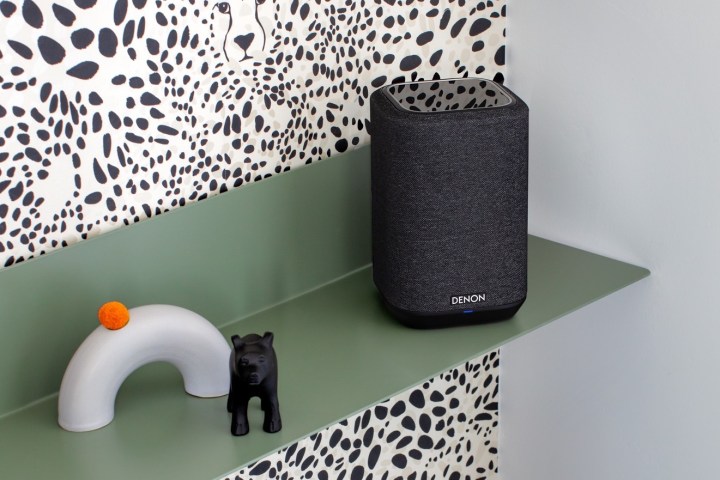
Japanese audio company Denon has revealed a system of three wireless multiroom speakers called Denon Home: The $249 Denon Home 150, $499 Denon Home 250, and the $699 Denon Home 350. Each model is compatible with Denon’s HEOS Wi-Fi audio platform and can play hi-res audio files. AirPlay 2 and Bluetooth round out the speakers’ wireless connections. The new models will go on sale in the first quarter of 2020, though no specific release date has been shared.
Intriguingly, all three models of Denon Home speakers will come equipped with two microphones for future voice assistant support. However, these microphones will be disabled and not functional until a future software update is available, according to the company. Denon has not yet indicated which voice assistants will be compatible with these new speakers.

Streaming music support for the Denon Home speakers is accessed from within the Denon HEOS app, and includes Amazon Music HD, Spotify, Apple Music, Pandora, Tidal, and others. Available in either black or white, each speaker is equipped with a USB port to access and share audio files from thumb drives or external hard drives. There’s also an analog auxiliary input. The Denon Home models can be controlled and grouped with other Denon products with HEOS built-in.
The speakers can also be set up as a stereo pair (with a second matching unit) or as a pair of 5.1 surrounds when paired with Denon’s DHT-S716H soundbar and DSW-1H subwoofer.
In many ways, the Denon Home speakers appear to be new versions of the company’s HEOS line of wireless speakers. Though considerably more conservative-looking than the stylized HEOS line, functionality is almost identical. With the addition of future smart speaker capabilities, Denon is hoping to compete with brands like Sonos, Bose, Amazon, and Riva, all of which have launched their own wireless multiroom speakers with built-in voice assistant access — something the HEOS line hasn’t offered. However, Denon tells us the Denon Home is not going to replace the HEOS line, despite the similarities.

Beyond their shared attributes described above, as the model numbers and prices suggest, each Denon Home speaker is sized for different uses. The range-topping 350 has two tweeters, two midrange drivers, and two woofers, all driven by a six-channel amp. Atop the speaker are touch controls for music playback and volume, plus six preset buttons that can be assigned to your favorite streaming radio stations.
The midsize 250 gets two tweeters, two mid-bass drivers and a single woofer, along with three preset buttons. The 150 has a single tweeter and woofer, also with three presets.
Denon initially expanded its HEOS line of wireless speakers aggressively, giving Sonos a run for its money. But since 2017, there hasn’t been much in the way of new products, while Sonos has slowly but surely launched new speakers and components every year, including its most recent major effort, the fully portable Sonos Move.
Editors' Recommendations
- Wiim’s new amplified streamer mimics the Sonos Amp, for $299
- Astell&Kern’s new headphone DAC is PlayStation-ready
- Dali says its latest wireless headphones achieve electrostatic levels of clarity
- Tivoli Audio’s Model Two Digital speaker abandons terrestrial radio
- B&O’s Beolab 8 wireless speaker uses AirTag tech to track you




